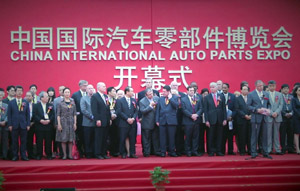A time to hasten slowly
Updated: 2013-09-20 15:35
By Ed Zhang (China Daily)
|
|||||||||||
China's good economic numbers keep coming, but trouble could be just around the corner
Today's good news may be tomorrow's worry.
Having written about the Chinese economy for many years, you notice that when the rest of the world is talking about China's coming economic debacle, it is in fact heading for a healthy turn. And when the whole world is celebrating China's good numbers, it may soon slip back into some "complicated situation", as the spin doctors would put it.
This is because business cycles in China tend to be shorter as a result of frequent government interference. New trends and concerns can arise every three months.
Right now, we may be at such an interesting point. When nearly all major markets are on the rise, from Japan to the US, China has not missed the flight and has recently shown off some soothing figures. No one should complain about that, but it is also time to take precautions against possible setbacks.
Last month, exports, a traditional engine of China's economic growth, grew year-on-year by 7.2 percent, compared with 5.1 percent in July. Large orders were crawling back from the United States and Southeast Asia. Analysts have already forecast higher trade growth this month.
Investment in fixed assets, a second engine of growth, rose by an annualized 20.3 percent from January to August, compared with 20.1 percent from January to July. In other words, more money went into investment in August than the monthly average from January to July.
Consumption, the third engine of growth, is also picking up, increasing 13.4 percent before deducting inflation, which was up 0.2 points from July. At the same time, inflation, as measured by the consumer price index, was a mild 2.6 percent year-on-year, even lower than July's 2.7 percent.
So far, so good. One may call China's August reporting card a feat considering the government's continuing efforts to cut red tape (say its approval powers), shed redundant capacity, lower taxes on small enterprises and launch some fresh pilot reform programs. No one has to be worried about an ugly hard landing any more.
Then what? What about the last quarter of the year? What about the beginning of 2014? In contrast to all the bright short-term figures, one large dark shadow stands out. Without moving it out of sight, it could derail all the good efforts China has made until now. And that is the wrong kind of urbanization that we see in many local governments' grand plans.

Indeed, the Chinese public should thank Premier Li Keqiang for not hastily introducing a national urbanization program based primarily on financial stimulus.
The National Audit Office's stocktaking of all government debt, a task ordered by the premier that may last into October, would be more likely to result in the government exercising greater caution in dealing with urbanization.
If urbanization is understood just as more real estate projects - large airports, railway stations, central business districts and so on - and if most of the projects are to be financed by government debt, then China's next round of development would be no different from the hurriedly structured stimulus program of 2008-09, which carried a price tag of 4 trillion yuan ($650 billion) but opened the floodgates for much more easy credit.
That stimulus program is now widely criticized for having caused bad inflation and waste. And its loosely regulated use also helped to hatch some of the worst corruption cases in large corporations. China cannot afford to repeat such mistakes.
I really wish Premier Li would add one more clause to his Likonomics: No hasty urbanization.
The author is editor-at-large of China Daily. Contact the writer at edzhang@chinadaily.com.cn.
(China Daily European Weekly 09/20/2013 page13)
Today's Top News
Verdict for Bo Xilai: Life in prison
Russian embassy to Syria shelled
Gunmen holding hostages in Nairobi
Amber alert across Asia, but not red
China signs 12 deals with Venezuela
Bo Xilai gets life in prison
New Sino-US ties sought
One Chinese killed in Nairobi attack
Hot Topics
Lunar probe , China growth forecasts, Emission rules get tougher, China seen through 'colored lens', International board,
Editor's Picks

|

|

|

|

|

|





